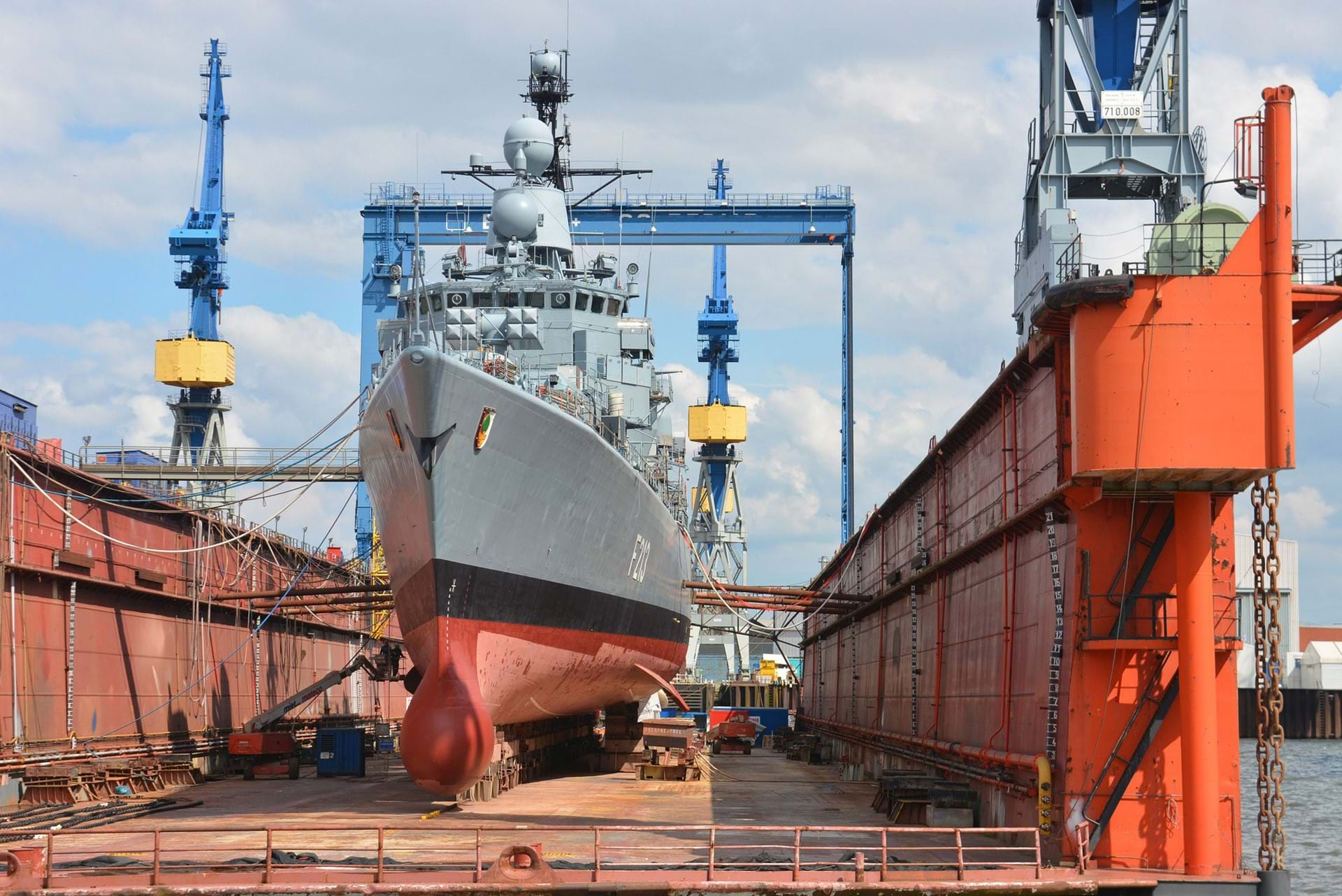
Shipyards' best practices to minimize footprint
CommitmentWhile this is the first year that shipyards have their own set of environmental performance indicators, these participants have been able to benchmark their progress within the Green Marine program since 2011 by sharing the criteria also used by terminals. A number of participating shipyards have been active for some time in and before joining the program in terms of improving their sustainability with more big plans in the works.
A few of these participating shipyards are featured in this issue with no doubt others being showcased in future in the spirit of Green Marine consistently sharing best environmental practices and innovative solutions.
Since becoming the first West Coast ship owner/shipyard participant to join Green Marine in 2011, Seaspan has experienced tremendous expansion in its shipyard division. “We now have the three largest shipyards on Canada’s West Coast that have become the biggest part of our business,” confirms Daryl Lawes, Seaspan’s Senior Manager, Environment. “Together, our two shipyards in North Vancouver and one in Victoria, B.C., employ more than 3,000 people.”
The company has also put significant effort into improving efficiencies and reducing emissions, community impacts, and waste at its facilities.
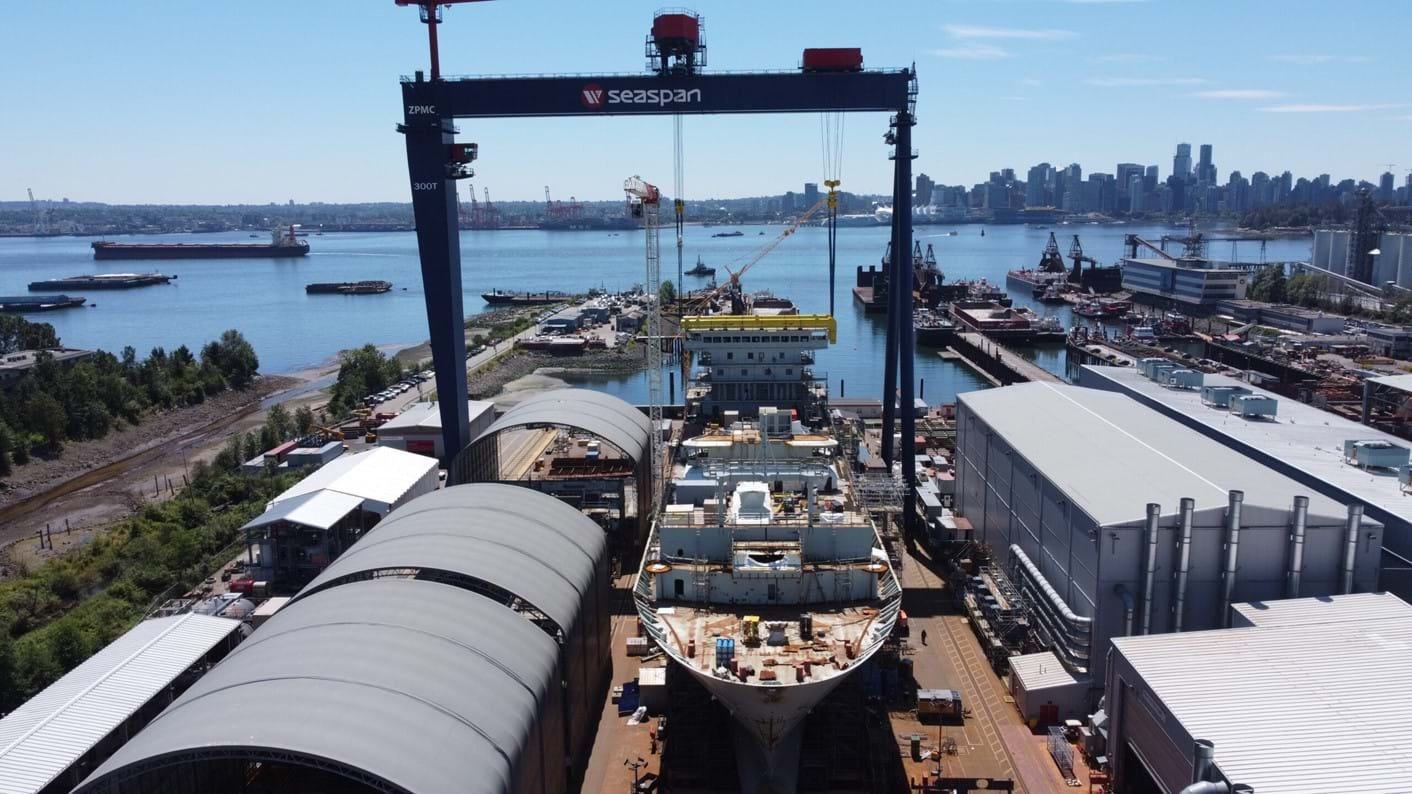
Seaspan Shipyards established a goal in 2020 to divert 50% of the waste ending up in landfills. “I’m pleased to say that we’re at 75% waste reduction, thanks to the combined efforts of our three shipyards,” Lawes shares.
Waste reduction committees were established at each shipyard with representatives from the company’s projects management, trades, facilities, supply chains, as well as some major suppliers. The committees work to identify and implement waste reducing initiatives. These have included eliminating single-use plastics, introducing recyclable ear plugs, and a program to launder soiled rags instead of discarding them.
It has been great to see diverse groups working together to achieve this common waste reduction goal.
Seaspan’s maintenance teams have successfully implemented a program to replace hydraulic fluid with environmentally acceptable lubricants (EALs) in most of the mobile shipyard equipment. “It took some effort to convince a few of our service providers to make this switch, but we felt it was essential in reducing the risk associated with hydraulic failures and potential spills.”
Reducing noise and light impacts have become mounting priorities with residential dwellings often being constructed near the shipyards. “We’ve contracted monitoring companies to identify the sources of noise and ways to reduce it from our larger equipment,” Lawes says. “We’re careful where we position our vacuums and ventilation systems and, where possible, have installed sound-canceling barriers around them.”
An industrial energy manager was hired in 2022 to improve the energy efficiency and reduce emissions at the shipyards. “Having an expert who can pinpoint where and how our energy could be used more efficiently, as well as identify government or utility incentives, has significantly reduced our greenhouse gas impacts and saved us a significant amount of money,” Lawes says. “Efficient lighting projects alone have saved more than 450,000 kilowatts of power, which is awesome.”
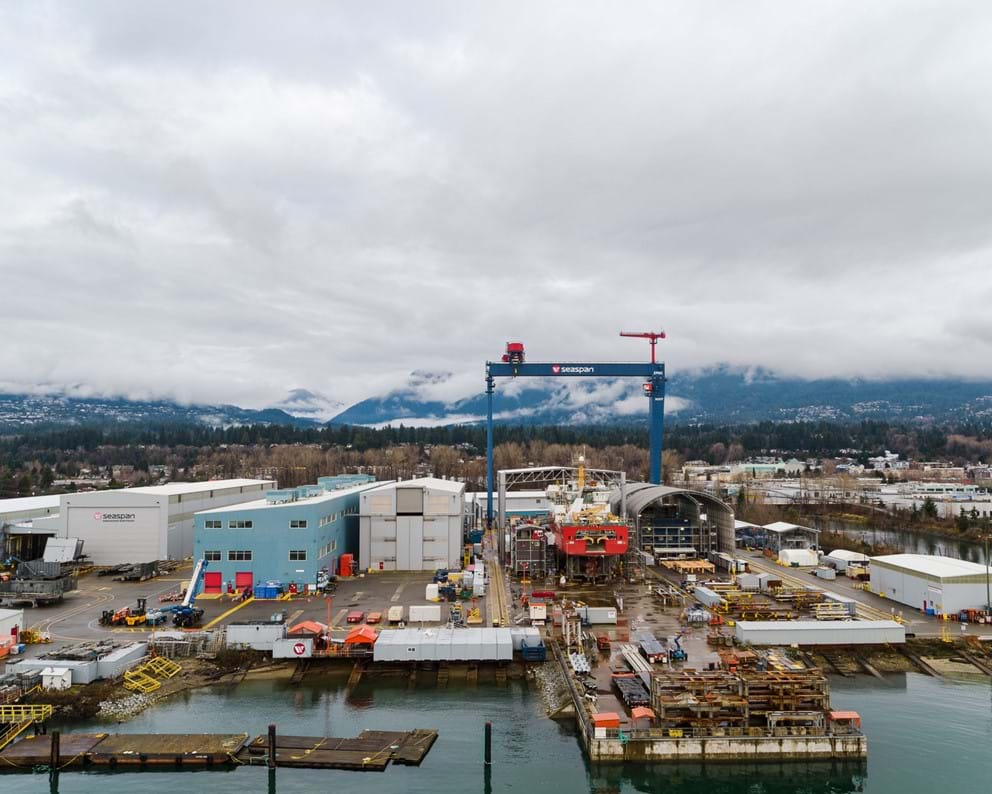
This content is not available because some cookies are blocked.
By clicking on this link, you agree that Youtube may collect data about you for targeting purposes. The video content will be displayed.
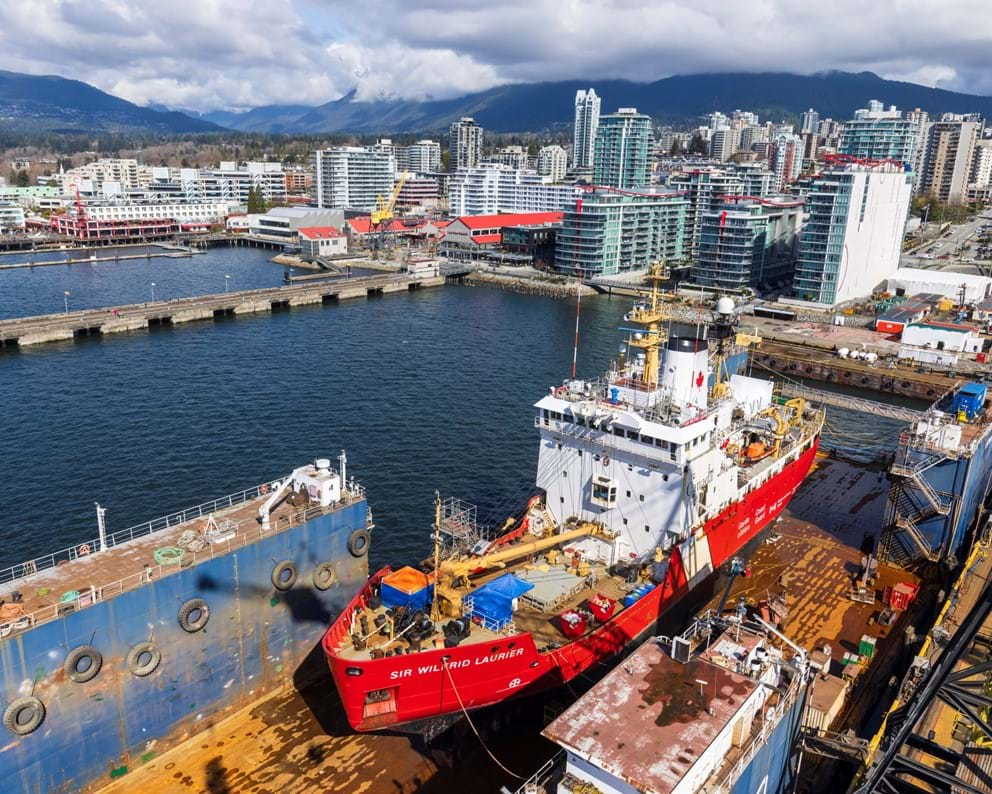
This content is not available because some cookies are blocked.
By clicking on this link, you agree that Youtube may collect data about you for targeting purposes. The video content will be displayed.
***
As the largest U.S. ferry system, Washington State Ferries (WSF) also has the biggest state-owned shipyard facility in the United States. “Our Eagle Harbor Maintenance Facility does most of the work for our 21 vessels – basically everything that doesn’t require a drydock,” says Kevin Bartoy, WSF’s chief sustainability officer.
“While the environmental challenges differ somewhat at the shipyard from the vessels and terminals, WSF takes the same care in how it approaches everything,” Bartoy adds.
We make sure our environmental priorities are communicated to all our staff so there’s a consistent sustainability vision throughout the organization.
One example is the current testing of environmentally friendlier degreasers at the shipyard’s maintenance shops. “We’re using environmentally safer products to see if they work as needed,” Bartoy explains. “If they do, we’ll extend their use to the engine rooms of all our vessels.”
Employees are encouraged to share ideas. One of them spearheaded the efforts to recycle the shipyard’s numerous wooden pallets. “She found a facility where pallets are repurposed into landscaping bark,” Bartoy relates. “This not only gets rid of the stockpile but keeps the carbon footprint lower by allowing this wood to degrade in a useful, natural way over time.”

Health, safety and environmental sustainability are prioritized in every new project. “For example, we’re building a new welding shop that will be situated upland rather than at the present location on a pier,” Bartoy shares. “This will further reduce the chances of welding polluting the environment, particularly the water.”
The facility is on the site of a former shipyard identified by the U.S. Environmental Protection Agency (EPA) as an abandoned waste location qualifying for the government’s decontamination superfund.
“When we purchased this property, we undertook a soil cleanup and created a confined disposal facility that contains mercury-laden sediments that were previously exposed to the environment,” Bartoy explains. “This is an effort that continues with the EPA superfund’s oversight and includes replacing the existing creosote piles with environmentally friendlier products over time – so the environment is better for WSF being here.”
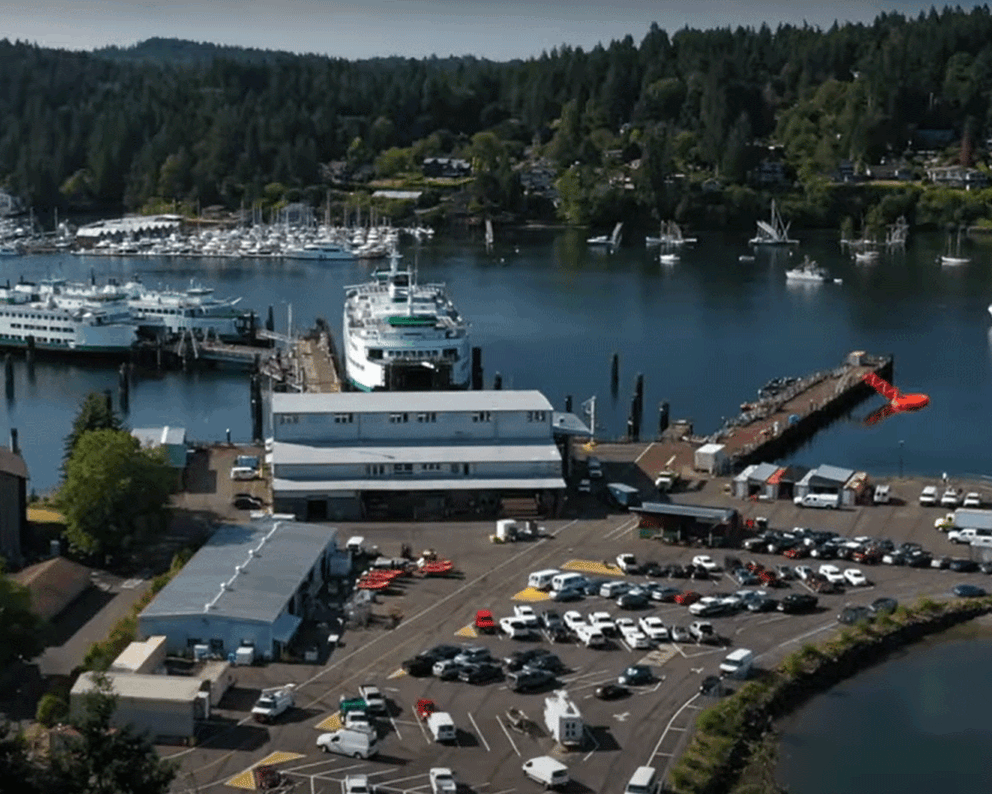
This content is not available because some cookies are blocked.
By clicking on this link, you agree that Youtube may collect data about you for targeting purposes. The video content will be displayed.
***
Heddle Shipyards is the largest Canadian ship repair and construction company on the Great Lakes. Its Hamilton location with three floating drydocks, and its Port Weller operations in St. Catharines, Ontario, with two Seaway max graving docks, were initially certified by Green Marine for their 2021 environmental performance. The company is looking to add its Thunder Bay operations to the program next year.
The shipyards work on commercial vessels, government ferries, the Coast Guard fleet, as well as vessels associated with Toronto Cruise Lines.
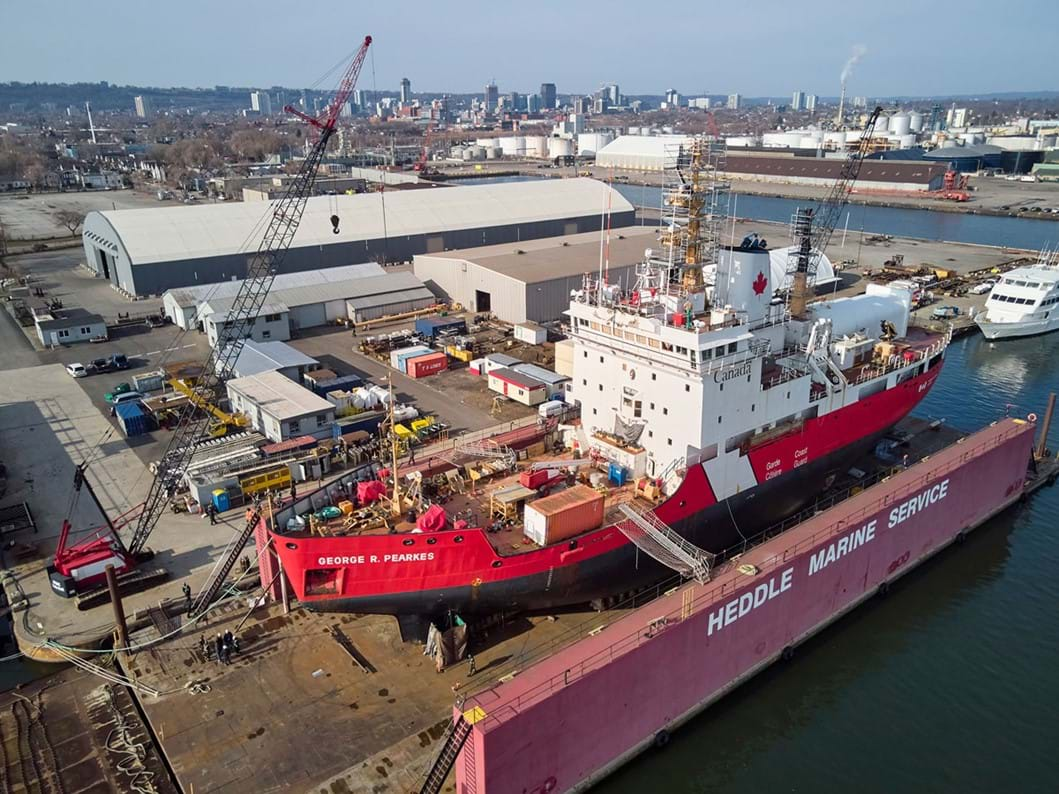
As part of the Ontario Shipyard Modernization Project, Heddle Shipyards has obtained $14 million in funding through the Skills Development Fund to focus on training new and current employees, and to upgrade key equipment and training facilities to state-of-the-art technologies.
“We’re now using virtual reality to train employees on robotic welding and blasting systems that will not only be more efficient, but environmentally friendlier by further reducing any particle dispersion into the air,” explains Ted Kirkpatrick, Heddle’s director of Business Development and Government Relations. “These are also higher-skilled jobs with fewer health risk for our current and future employees.”
The company’s efforts to improve sustainability began initially with a comprehensive recycling program.
“We recycle a wide range of material from vessel recycling and repair and that policy extends to our offices where we recycle paper, of course, batteries and printer cartridges,” says Dan Cummings, Heddle Shipyards’ Health and Safety, Security and Environment manager. “All the recycling bins are clearly labeled and readily accessible.”
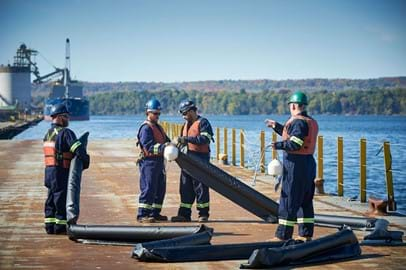
The spill prevention response team is trained to locate and use the various spill response kits at the ready around the shipyards if required.
“We also have clear signage in the parking lots to make everyone aware of the need to prevent any kind of spill,” Cummings says.
Heddle Shipyards is now looking at calculating its greenhouse gas (GHG) emissions. “We’ll be undertaking a GHG inventory for the first time this year,” Cummings notes. “We’ll be calculating the emissions based on the various types and amounts of fuels we use in our shipyards to operate equipment and vehicles so that we can then identify ways to reduce emissions.”
Efforts are underway already with Heddle seeking to electrify operations. “We’ve just purchased an electric scissor lift,” Cummings shares. “And we’re now looking at the feasibility of having electric vehicles for our workers to get around in our shipyards.”
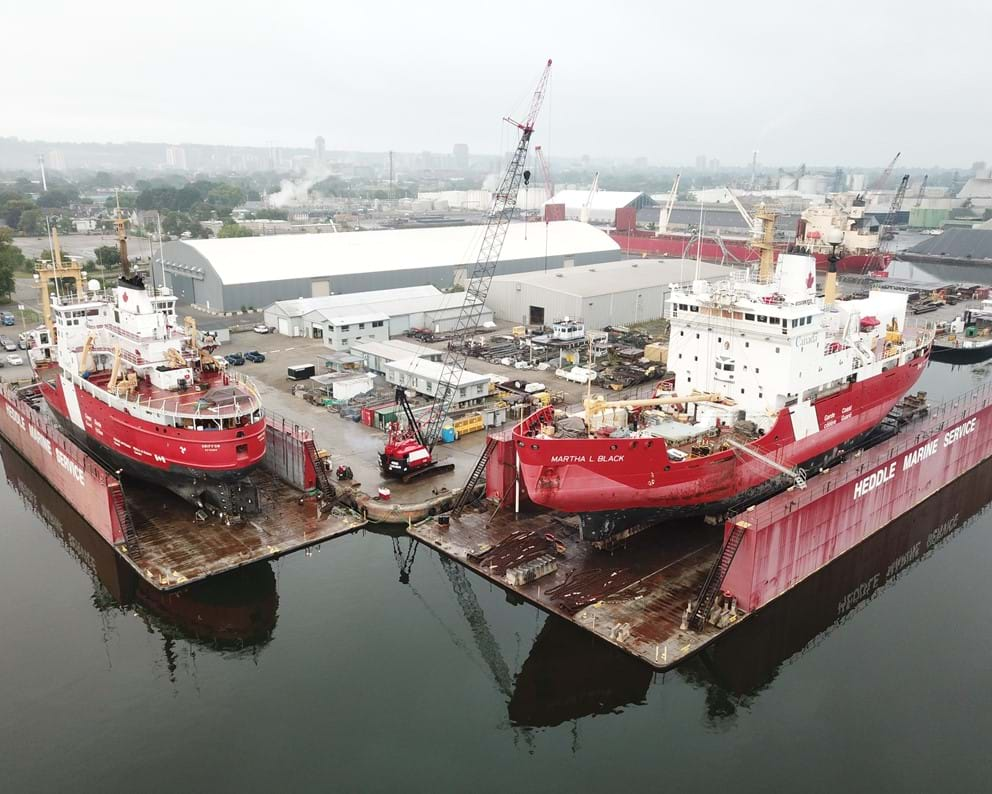
This content is not available because some cookies are blocked.
By clicking on this link, you agree that Youtube may collect data about you for targeting purposes. The video content will be displayed.
***
Motive Power Marine LLC in Tacoma, Washington, places its focus on barge inspections, maintenance and repair. “Most vessels are required to dock every five years for inspections and maintenance,” says JD Schultz, the company’s president. “And many of our customers utilize our services to complete these inspections and perform any steel repairs or preservation painting.”
The company’s founder, Ben McDowell, was always committed to leaving the environment better than he found it. Schultz holds the same view as essential to his children’s future.
We always want to identify what we can do to achieve a more sustainable future and saw Green Marine as a program that would bring us into that next realm of where we need to be in terms of the environment.
Environmental considerations begin as soon as the vessel enters the dock. “Our facility is bordered by a containment berm with underground storm drains isolating water from vessel maintenance,” Schultz explains. “The water is then filtered and released using our company’s industrial wastewater discharge permit… No water is ever released into Puget Sound.”
All steel and zinc materials removed from vessels are collected and shipped to local recycling facilities.

Motive Power Marine is now seeking to make its operations significantly more efficient and environmentally friendly with an $800,000 U.S. Maritime Administration (MARAD) Shipyard Infrastructure Grant.
“We currently lack electrical power because it’s shared with a facility behind ours,” explains Neal Gaulden, Motive Power Marine’s vice president. “The funding would enable us to work with Tacoma Power and the Port of Tacoma to establish our own source of power.”
The grant would also cover the conversion to electrically powered winches and welding equipment. “Running the equipment on clean electricity instead of diesel fuel will result in less air emissions,” Gaulden notes. “The analysis we’ve done also indicates that electrical winches could reduce docking and undocking times and make it possible for us to service another vessel or two yearly.”
A larger air compressor will likewise permit the shipyard to complete projects in less time with reduced emissions.
“With enough power, we can look at acquiring electrically powered heavy machinery that would further reduce emissions,” Gaulden adds.
We’re also planning for solar power upgrades that would provide clean power to the city’s grid.
More equipment running electrically will significantly decrease noise pollution for onsite workers, as well as neighbouring communities.

This content is not available because some cookies are blocked.
By clicking on this link, you agree that Youtube may collect data about you for targeting purposes. The video content will be displayed.
***
Gulf Marine Repair, a subsidiary of Hendry Marine Industries, specializes in ship repair and conversion in Tampa, Florida. Located in Central Florida’s main fuel distribution hub, it regularly services large fuel transporters, especially articulated tug-and-barge vessels, that arrive from Louisiana and Texas refineries. The vessels require frequent inspection and maintenance to ensure the safe transportation of fuel products.
“We’re delighted that Gulf Marine Repair was Green Marine certified last year,” says Hal Hendry, the special projects manager. “Of course, we still have a lot to improve, but getting certified in our first year because of what we’re already doing is a good feeling, as is knowing we’re on the right track.”
Hendry was tasked with investigating Green Marine after the board of directors recommended the implementation of an environmental, social and governance (ESG) program and a consultant recommended the certification process.
There are many ESG organizations out there, but we liked how well structured Green Marine is and the fact that it’s specifically focused on the maritime industry.
“We also like that it holds us accountable to improve every year.”
In keeping with the state’s regulations, Gulf Marine Repair had already been reporting on the various environmental measures. “Green Marine’s template helped us to gather, organize and formally document that information to submit for verification,” Hendry says. “It is now also easier to present to others.”
For its spill prevention and stormwater management, Gulf Marine Repair hired a consultant to establish a plan. “She continues to do a quarterly inspection of the facility to ensure our plan remains in compliance and evolves with any required improvements,” Hendry says.
Gulf Marine’s Health, Safety and Environment Department collects and analyzes samples of stormwater runoff, and its sister company and Green Marine partner, Universal Environmental Solutions, maintains a floating barrier called a Watergoat.
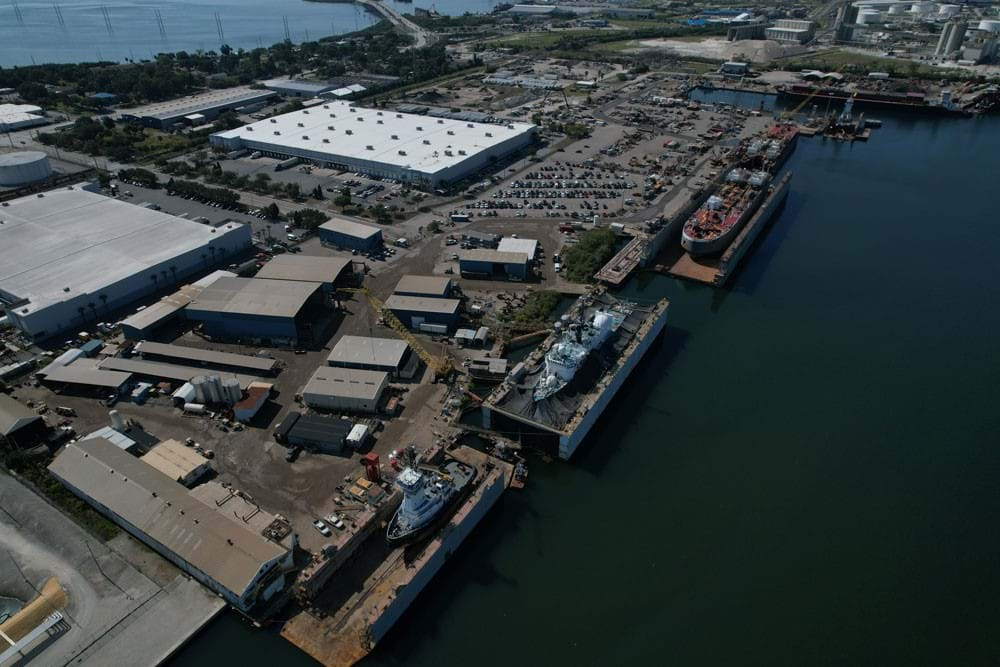
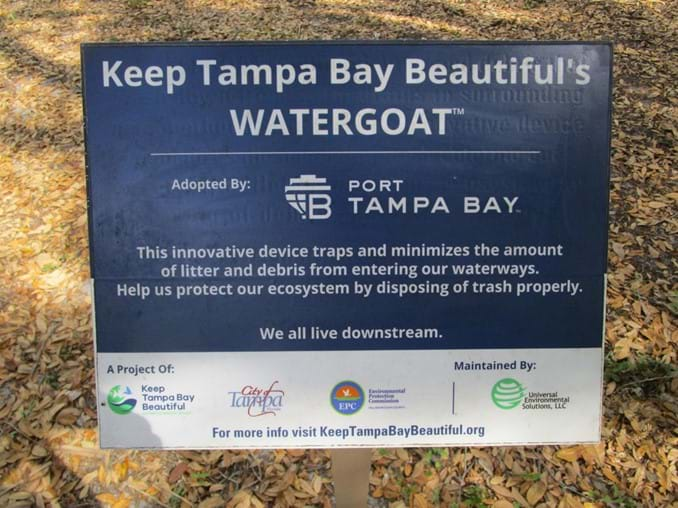
The Watergoat barrier prevents trash from entering Tampa Bay at a local stormwater outfall.
To prevent dust dispersion while sandblasting, the company drapes giant tarps from a barge’s deck to the drydock wing walls and later vacuums up the grit. “We’re also encouraging more of our customers to opt for hydro-blasting instead,” Hendry adds. “The high-pressure wash removes paint without creating dust.”
Gulf Marine Repair is already extensively involved in the community by participating in Port Tampa Bay’s Great Port Clean-Up Day for trash removal around the port, as well as being active in the local Propeller Club, which is one of the largest in the United States.
“Green Marine’s criteria helped us to recognize that we’re already a good neighbour,” Hendry says. “But we’re revamping our website and improving other channels of communication to further improve our community relations.”

This content is not available because some cookies are blocked.
By clicking on this link, you agree that Youtube may collect data about you for targeting purposes. The video content will be displayed.
___________________
READ MORE ON THIS TOPIC:
Green Marine prepares standalone criteria for shipyards in time for reporting 2023 efforts
Green Marine Europe works in partnership with North American program to establish indicators
